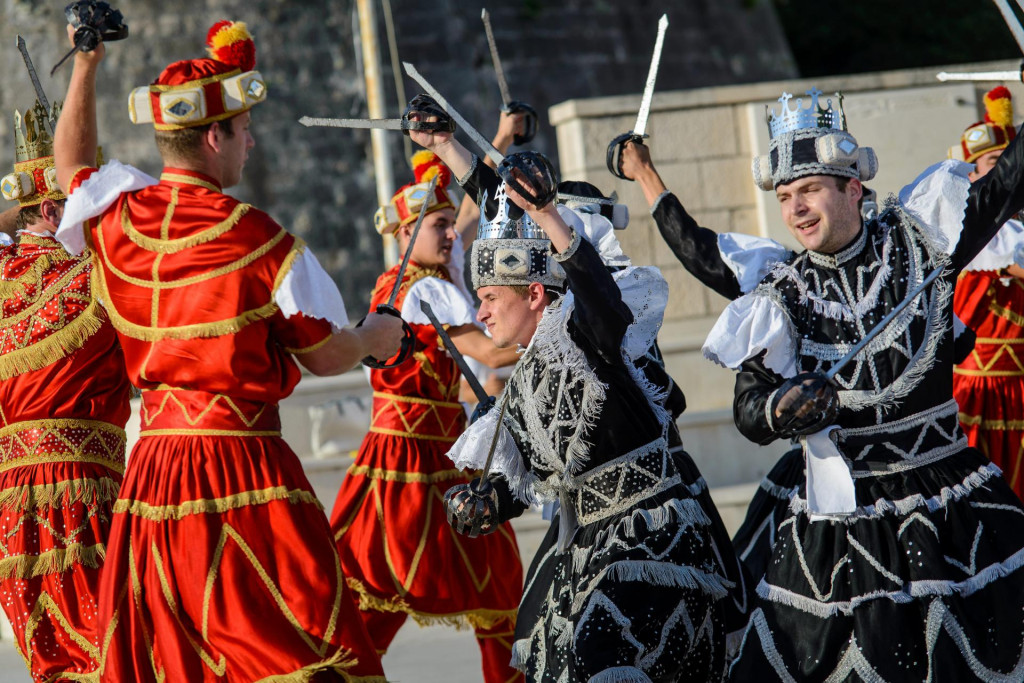The island of Korčula is known for its sword dancing, almost every island locality boasts of a unique version of the chain dances with swords – kumpanija. However, only Korčula can boast of moreška, a romantic battle dance with swords that originated in the 12th century. This famous fencing dance with dramatic elements was once in vogue throughout the Mediterranean, but as interest in moreška faded in the rest of the world, it grew on the island, so today you can only see it in Korčula, where it has been performed for more than 350 years
It is assumed that moreška came to Korčula from Spain in the 15th century, and through southern Italy and Dubrovnik. Spreading throughout Europe, that battle dance melted with the existing local traditions. It thus became and important part of the Korčula families and a living monument of the turbulent history of the Mediterranean and its cosmopolitan spirit.
The name moreška came from the Moors, the Morisks. In Spanish, the adjective morisco was created, and in Italian moresco, which symbolizes the battle dance for the expulsion of the Moors. The play is a captivating romantic story, the eternal struggle of two armies, white and red and black, for a girl, relying on traditional Mediterranean legends.
Moro, the son of the black king, kidnaps a bula (girl) from the white king. Following a dialogue between the two kings, the armies clash in seven different music and dance figures called the collapse in Korčula. It is believed that the seven collapses also signify the seven days that the battle lasted. The seventh collapse ends with the defeat of the black army, the surrender of the Moors, while the white king frees the girl, and the enthusiastic audience is given a passionate kiss of salvation, the hope that justice always wins.
Over the centuries, Moreška has experienced smaller interventions in Korčula, primarily in the number of collapses, of which there were more in the past, as well as the introduction of additional dramatic action. The dance is today performed with accompanying music which was composed for the brass band by the Croatian composer Krsto Odak in 1937, and has been continually accompanying the moreška since 1947.
Moreška symbolizes the everlasting struggle of good and evil, as well as the cultural identity not only of the town but also of its inhabitants. Roles like the black king, the Ottomans, the white king or the bule in Korčula have often, for centuries, been passed down from generation to generation within the family. It is an unwritten rule that white Moreškans are taller and blacks are smaller, while even today there is a controversy on the streets of Korčula about which, in the rich history of Moreška, was the best and most beautiful bula. This unique and valuable cultural and historical heritage is today preserved by two societies, HGD St. Cecilia and KUD Moreška, and the most important and ceremonial annual performance takes place on the feast day of the co-patron of Korčula, St.Todor, on July 29.





Za sudjelovanje u komentarima je potrebna prijava, odnosno registracija ako još nemaš korisnički profil....